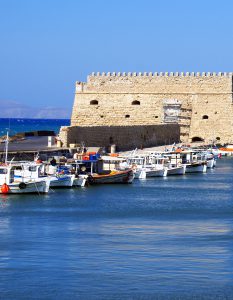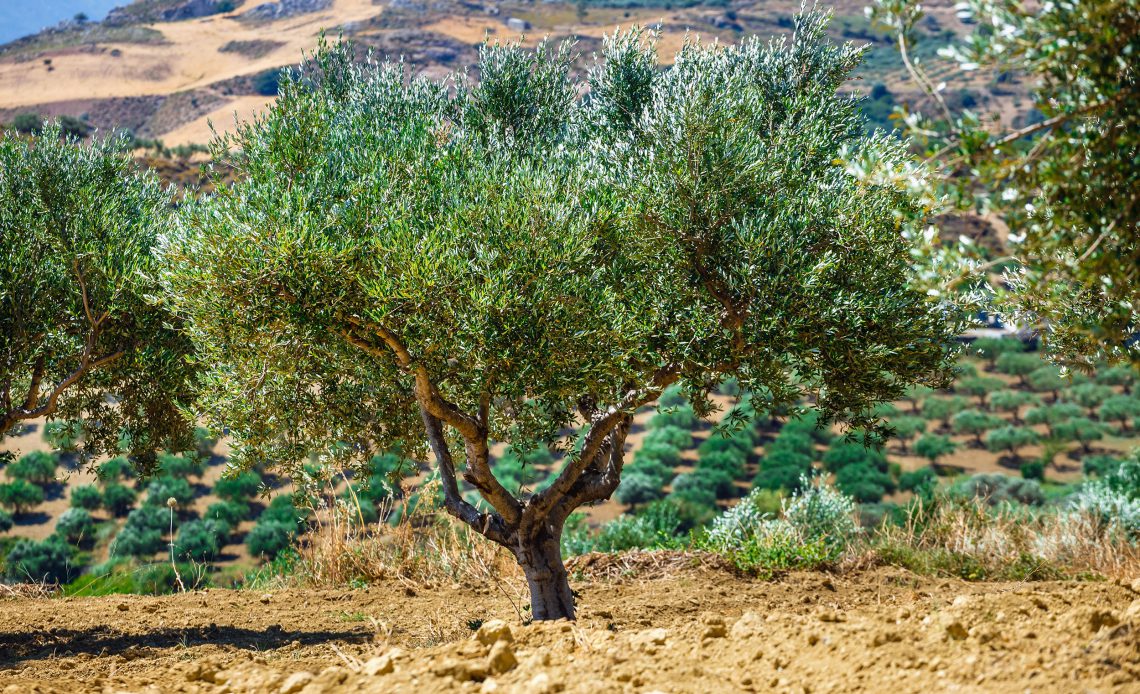Crete Information
CCrete is one of the shining jewels of the Mediterranean Sea and visiting Crete is the experience of a lifetime. To make the most out of your holiday in Crete, please read the information below.
Useful Information about Crete
 On the map, you will find Crete off the south-eastern shores of mainland Greece. Crete is one of the 13 peripheries that make up the Greek nation and is actually the biggest of all the islands scattered over Greek waters. Its total area is 8,336 square kilometers, making it the fifth biggest island on the Mediterranean Sea.
On the map, you will find Crete off the south-eastern shores of mainland Greece. Crete is one of the 13 peripheries that make up the Greek nation and is actually the biggest of all the islands scattered over Greek waters. Its total area is 8,336 square kilometers, making it the fifth biggest island on the Mediterranean Sea.
Crete is a long island, with a length of 260 kilometers stretching from the western to the eastern shore. On the other hand, the width of the island varies from point to point. Its widest measure is 60 kilometres, but at Ierapetra, it is only 12 kilometres wide.
The terrain of Crete is very mountainous. There are three mountain ranges found crossing the island, namely: the Lefka Ori, also known as the White Mountains; the Idi mountain range; and the mountains of Dikti. While these mountain ranges make Crete rough and rugged, they have also blessed the island with such beauties as the Gorge of Samaria and the caves of Dikteon and Ideon.
Climate of Crete
Owing to its location, Crete has a climate that can be described as temperate Mediterranean. The implication is that summers in Crete are very hot and dry with almost no rainfall, while in winter it is typically wet and chilly. The falling of snow is a rare occasion in Crete, except along the mountainside.
Summer in Crete happens from June to September, peaking at around August. The temperature in Crete at this time ranges between 29°C to 38°C. By the end of September, the temperature begins to drop to between 23°C to 29°C and the rainfall becomes more or less frequent. Crete is coldest in the months of December and January with a temperature of 17°C to 26°C, and the rainfall is most earnest in February.
History of Crete
Knossos in Crete is a very ancient civilization that has been enriched over time by the conquest of other cultures. The island is the center of the oldest civilization that has ever existed in Europe, which is the Minoan civilization. The histories of Crete during these olden times, however, are shrouded in myths and legends.
The capital of the Minoan civilization in Crete is Knossos, the ruins of which are now a famous tourist attraction. The eruption of the volcano on Thera in 1400 BC was theorized to have triggered the fall of Knossos and the entire Minoan civilization.
Afterwards, Crete became the home of Mycenaean and Dorian tribes migrating from Greece.
The Hellenistic period of Crete saw the island entering a time when various city states such as Gortyn, Chania and Ierapetra vying for supremacy on the island. It was also a time when piracy became rampant. The conflicts in Crete attracted the attention of the Romans, and after a three-year siege, Crete fell to the might of Quintus Caecillius Metellus and became a province of Rome. The Romans established Gortyn as its capital on Crete. When the Roman Empire fell apart, Crete came under the rule of the Byzantines. The rule of Constantinople, however, was interrupted in 824 AD when the Iberian Muslims invaded Crete and established their emirate on the island. The Iberian Muslims burned Gortyn down and built the city of Candia for their capital. Candia still remains the administrative capital of Crete under the name Heraklion.
In 960 AD, Constantinople sent Nicephorus Phocas to retake Crete for the Byzantine Empire. But the Byzantine Empire also collapsed, and this opened Crete to Venice, who conquered the island in 1204. Crete became Venetian territory until 1669, when the Ottoman Empire drove the Venetians out of the island.
The Ottoman Empire ruled Crete for the next two hundred years. A series of uprisings by the Christian Cretans that started in the 1820s began to undermine Ottoman rule, until the Ottomans themselves were driven out of Crete. In 1898, Crete became an independent state, and in 1913, as an aftermath of the Balkan Wars, unified with Greece.
Airports and Ports in Crete
The main international gateway of Crete is the Nikos Kazantzakis International Airport. It is the second largest airport in Greece and also one of its busiest. There are two noteworthy airports on the island, however: the Daskalogiannis Airport in Chania, and the domestic airport of Sitia.
The towns of Heraklion, Chania, Rethymnon, Sitia and Agios Nikolaos are built with their own passenger ports. These ports connect Crete to mainland Greece as well as to the other Greek islands via daily ferries.
Accommodation in Crete
As Crete is a major tourist destination in Europe, it is expected to find many hotels operating there, from small, family-run establishments to luxury hotels run by chains. For those who wish to experience Crete independently of any marketing package offered at the bigger hotels, there are also vacation villas, and self-catering apartments.
Sights You Should Not Miss in Crete
Crete is a very beautiful island with so many sites to see. On a holiday in Crete, you should not pass up the chance to:
• Visit the Minoan ruins in Knossos and Phaistos, as well as the Archaeological Museum of Heraklion
• Explore the rugged Cretan countryside, away from the beaches and the big towns
• Take a hike down Samaria gorge. The hike often takes four hours to complete, starting from the Omalos Plateau to Agia Roumeli
• Find the more secluded beaches and the more remote areas, away from the tourist crowds and the commercialism
Useful links about Crete
- Crete diving, scuba diving in Agia Pelagia, Heraklion and Malia by Crete Diver’s Club
- We Love Crete Exposing unique corners of Crete island and her lifestyle; from the coves to the mountains, cuisine, architecture, art and nature of this historic yet cosmopolitan island. Detailed, real information about Crete and her culture, music & villages.

